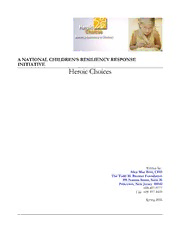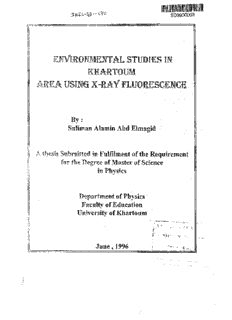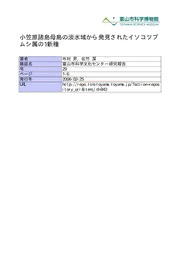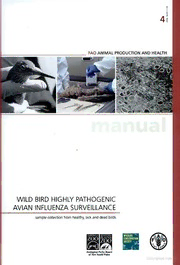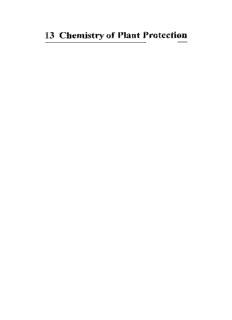
Molecular Mechanisms of Resistance to Agrochemicals PDF
Preview Molecular Mechanisms of Resistance to Agrochemicals
13 Chemistry of Plant Protection Springer-Verlag Berlin Heidelberg GmbH 13 Chemistry ofPlant Protection Molecular Mechanisms of Resistance to Agrochemieals Volume Editor: Volkert Sjut With contributions by J.A. Butters, D.W. Hollomon, S.J. Kendall, C.O. Knowles, M. Peferoen, R.J. Smeda, D.M. Soderlund, J. Van Rie, K.c. Vaughn With 14 Figures and 5 Tables , Springer Volume Editor: Dr. Volkert Sjut Hoechst Schering AgrEvo GmbH Postfach 2706 54 D-13476 Berlin, Germany This series continues the handbook "Chemie der Pflanzenschutz-und Schädlingsbekämpfungsmittel" edited by R. Wegler ISBN 978-3-642-08289-4 Die Deutsche Bibliothek -CIP-Einheitsaufuahme Molecular Mechanisms ofresistance to agrochemicals : with 5 tables / vol. ed.: Volker Sjut. With contributions by 1. A. Butlers ... (ChemislIy of plant protection ; 13) ISBN 978-3-642-082894 ISBN 978-3-662-03458-3 (eBook) DOI 10.1007/978-3-662-03458-3 NE: Sjut, Volker (Hrsg.); Butters, J. A.; GT This work is subject to copyright. All rights are reserved, whether the whole or part of the material is concemed, specifically the rights of translation, reprinting, re-use of illustrations, recitation, broadcasting, reproduction on microfilms or in other ways, and storage in data banks. Duplication ofthis publication or parts thereofis only permitted under the provisions ofthe German Copyright Law ofSeptember 9, 1965, in its current version, and a copyright fee must a1ways be paid. © Springer-Verlag Berlin Heidelberg 1997 OriginaIIypublished by Springer-Verlag Berlin Heidelberg NewYork in 1997 Softcover reprint of the hardcover 1st edition 1997 ISSN0937-2148 The use ofregistered names, trademarks, etc. in this publication does not imply, even in the absence of a specific statement, that such names are exempt from the relevant protective laws and regulations and therefore free for general use. Typesetting: Macmillan India Ltd., Bangalore-25 Cover: design & production, Heidelberg SPIN: 10536100 5213020 -543 2 1 0 -Printed on acid free paper Managing Editors Editor-in-Chiej Dir. u. Prof. Dr. W. Ebing i. R. Trautenaustraße 8 D-1 0717 Berlin, Gennany Prof. Dr. H. Bömer Institut rur Phytopathologie der Universität Kiel Hennann-Rodewald-Straße 9 D-24118 Kiel, Gennany Prof. Dr. D. Martin Universität Potsdam FG Naturstoffe Stahnsdorfer Damm 81 D-14532 Kleinmachnow, Gennany Dr.V.Sjut Hoechst Schering AgrEvo GmbH Postfach 27 06 54 D-13476 Berlin, Gennany Prof. Dr. H.-J. Stan Technische Universität Berlin Gustav-Meyer-Allee 25 D-13355 Berlin, Gennany Prof. Dr. J. Stetter ZF -FWl, Bayer AG, Q 18 D-51368 Leverkusen, Bayerwerk, Gennany Editorial Board Prof. M. B. Bouche Institut National de la Recherche Agronomique (INRA) Station de Recherches sur la Faune du Sol 7, rue Sully, F-21034 Dijon Cedex, France Prof. William S. Bowers The University of Arizona, College of Agriculture Department ofEntomology Tucson, Arizona 85721, USA Prof. F. Bro-Rasmussen Laboratory ofEnvironmental Sciences and Ecology Technical University ofDenmark Building 224, DK-2800 Lyngby, Denmark Dr. Ivano Camoni Istituto Superior di Sanita, Laboratori di Chimica Viale Regina Elena 299 1-00161 Rome,ltaly Dr. Clive Arthur Edwards The Ohio State University, Department ofEntomology 103 Botany and Zoology Building, 1735 Neil Avenue Columbus, Ohio 43210-1220, USA Prof. E. Paul Lichtenstein Russell Laboratories, Department ofEntomology University of Wisconsin Madison, Wisconsin 53706, USA Prof. 1. Miyamoto Laboratory ofBiochemistry and Toxicology Takarazuka Research Center, Sumimoto Chemical Co. Ltd. 2-1, 4-Chome Takatsukasa Takarazuka-Shi, Hyogo-Ken 665, Japan VIII Editorial Board Dr. lohn V. Schloss Research Supervisor, Central Research and Development E. I. DuPont de Nemours Wilmington, Delaware 19898, USA Dr. L. G. M. Th. Tuinstra State Institute ofQuality Control of Agricultural Products Bomesteeg 45 NL-6708 PD Wageningen, The Netherlands Prof. Dr. Andrzej Zabza Technical University ofWrolaw Institute of Organic and Physical Chemistry Wybrzeze Wyspianskiego 27 PL 50-370 Wrozlaw, Poland Honorary Member Prof. Dr. Richard Wegler Auf dem Forst D-51375 Leverkusen-Schlebusch, Germany Editorial Development ofresistance against toxic substances can be recognized in nearly all classes oftarget organisms. This is surprising in view ofthe very different processes acting between the agents and the receptors or sites ofthe insects, plants, fungi etc. For several years, resistance has become a severe problem in the plant pro tection field. In consequence, research on the mechanisms of these very various resistance phenomena has developed into a major task in physiological chemis try and molecular biology. Due to the rapid progress in developing new diagnostic and experimental methods in life sciences, one may observe a rapid accumulation of knowledge and results in resistance research within the last years. Nowadays, gene research has begun to play an important role in this area. In this context, we believe now to be the right ocassion for a book reviewing most ofthe data on research into the mechanisms ofresistance occuring in the four main classes ofpesticides. The descriptions ofthe biochemical processes in resist ance and the success in measures to combat these are supplied by a chapter about bioengineering methods for resistance management. We are pleased that leading specialists have been willing to describe research in their fields over the last decade and I would like to thank the authors -and also the managing editor -for their commitment. We hope to fulIfilI a need in this field. This volume ends the book series "Chemistry of Plant Protection". Within a period of about ten years, "Chemistry of Plant Protection" has augmented the scientific literature with thirteen issues covering a broad spectrum of themes. The readers had been supported with actual topics out of research about persistence, degradation, and the metabolism of pesticides, about their impact on the environ ment, e.g. soi! and water, research ab out pyrethroids, brassinosteroids, gibberelins etc., research on several herbicide structure classes, certain fungicidal agents, development of methods in residue analysis, in immunoassays, in controlIed re lease applications, and in anti-resistance strategies. I think, these titles have been remarkable contributions describing the progress in pesticide research - within very broad limits. I would like to express my deep gratitude to all readers for their interest in these publications. I also thank the editorial board and the managing editors for their efforts, but especially the many authors who brought success to this series. The good cooperation with the publisher for producing books ofhigh quality is greatly acknowledged. Berlin, December 1996 W.Ebing Editor-in-Chief Table of Contents Mechanism of Resistance to Fungicides D.W. Hollomon, J.A. Butters, S.J. Kendall .................. . Molecular Mechanisms ofInsecticide Resistance D.M. Soderlund .......................................... 21 Mechanisms ofResistance to Acaricides C.O. Knowles ............................................ 57 Mechanisms ofResistance to Herbicides R.1. Smeda, K.C. Vaughn .................................. 79 Plant Engineering for Crop Protection: Implications for Resistance Management M. Peferoen, 1. V an Rie .................................... 125 SubjectIndex ............................................ 157 Mechanism of Resistance to Fungicides D.W. Hollomon, J.A. Butters and S.J. Kendall IACR-Long Ashton Research Station, Department of Agricultural Sciences, University of Bristol, Long Ashton, Bristol BS18 9 AF, UK Fungicide resistance has been reported from weH over 300 fungi, although the vast majority of these cases involve laboratory-resistant mutants, rather than fungi isolated from field crops. So far, only in some 25 plant pathogens has resistance become a serious practical problem. Whilst studies of laboratory mutants, and clinically resistant human yeast pathogens, have provided information on the molecular mechanisms of resistance, similar results from resistant strains coHected from field populations is extremely limited. Cross resistance studies suggest that much of this resistance is target based, reftecting changes in one or just a few genes. Only in the case of benzimidazole resistance, and the ß-tubulin target, is sufficient information available to understand aspects of the molecu lar basis of resistance. Even so, knowledge of how the amino acid changes clustered at codons 198 and 200 of ß-tubulin affect benzimidazole bin ding and alter pathogenicity, must await more detailed structural analysis of the ß-tubulin pro tein, and its association with Cl-tubulin to form tubulin filaments. To date, no fungicide target protein has been overexpressed and crystallized to provide a three-dimensional structure of fungicide binding sites although models are available which describe sites for azole fungicides in sterol 14Cl-demethylase. Nevertheless, sufficient information is becoming available at a molecular level to exploit rapid diagnostic methods to improve monitoring pro grammes. Progress is likely to be slow, however, since the molecular systems needed to analyse gene function in plant pathogens are at present very poorly developed, or even non-existent. 1 Introduction: Setting the Scene. 3 2 Definition of Resistance. 4 3 Genetics of Resistance. 5 4 Cross Resistance. . . . 7 5 Synergy and Antagonism . 8 6 Mechanisms of Resistance . . . . . . . . . . . 9 6.1 Target Changes. . . . . . . . . . . . . . . 9 6.1.1 Changes in Catalytic Parameters. 9 6.1.2 Isozymes . . . . . . 10 6.1.3 Molecular Studies . . . . . . . . . . . . . . . . . . . . . . . .. 11 Chemistry of Plant Proteetion, Vol. 13 © Springer-Verlag Berlin Heidelberg 1997
Description:The list of books you might like

The Silent Patient

The 48 Laws of Power

Shatter Me Complete Collection (Shatter Me; Destroy Me; Unravel Me; Fracture Me; Ignite Me)

The Subtle Art of Not Giving a F*ck
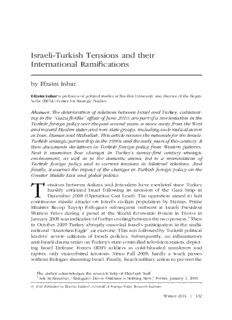
Israeli-Turkish Tensions and their International Ramifications

The Management of Consumer Credit: Theory and Practice
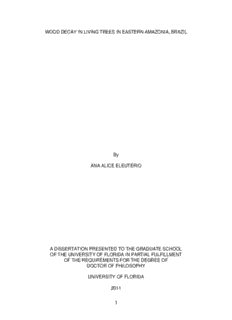
By ANA ALICE ELEUTÉRIO

Духовные христиане молокане в Амурской области во второй половине XIX - первой трети ХХ вв
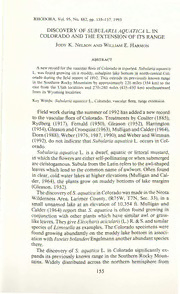
DISCOVERY OF SUBULARIA-AQUATICA L IN COLORADO AND THE EXTENSION OF ITS RANGE

This Man Confessed
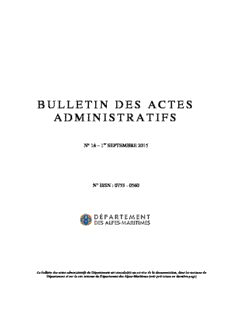
Bulletin des Actes administratifs n°18
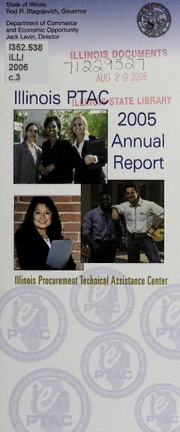
Illinois PTAC ... annual report

Bycatch, utilization, and discards in the commercial groundfish

The Retirement Years

Avertissements Agricoles - Grandes cultures - Bretagne - 2006 - 2
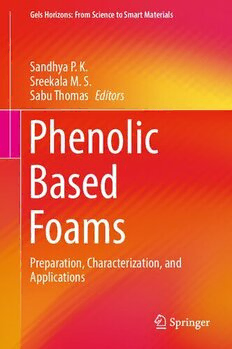
Phenolic Based Foams: Preparation, Characterization, and Applications
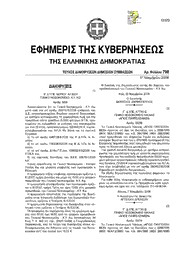
Greek Government Gazette: Part 7, 2006 no. 798
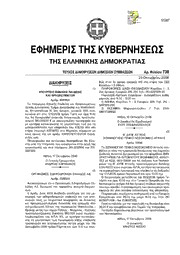
Greek Government Gazette: Part 7, 2006 no. 738
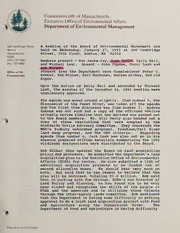
Department of Environmental Management Board Minutes

